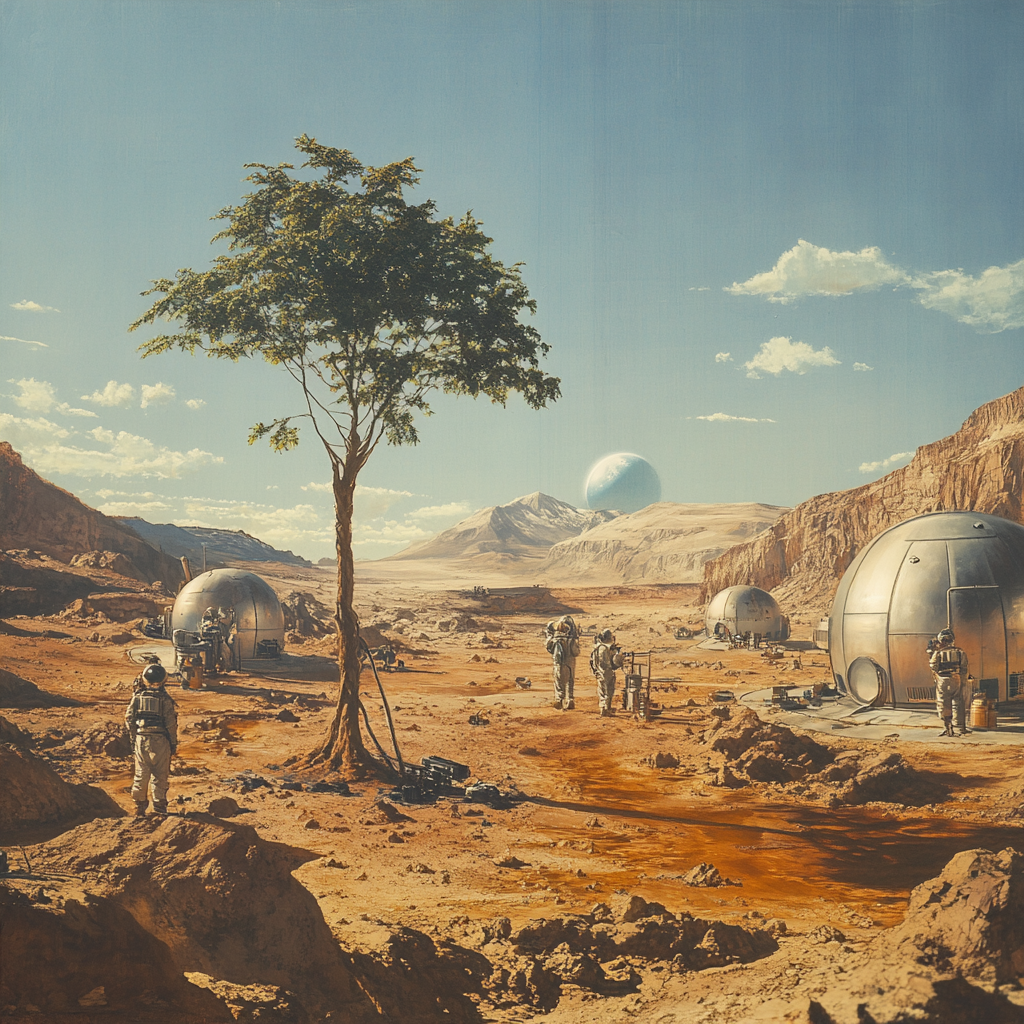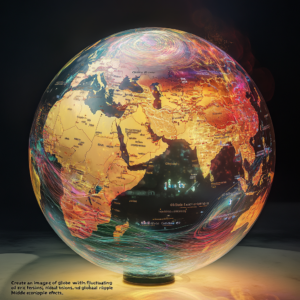
“Pioneering Flora: Calculating the Greenhouse Impact for Mars Terraforming”
Terraforming Mars: The Quest for the First Tree
Picture this: a vibrant, green Martian landscape where trees stretch skyward, painting the Red Planet with hues of life. Sounds like the stuff of dreams, doesn’t it? Yet the concept of terraforming Mars—transforming it from a cold, barren rock into a livable paradise—is a tantalizing topic that bends the boundaries of science, imagination, and quite frankly, our very existence. Amidst this cosmic canvas, scientists are rolling up their sleeves, examining what it truly takes to nurture the first tree on Martian soil. Why does a tree matter, you ask? Because it's more than just a plant; it’s the herald of life and a foundational element in making a Martian oasis a reality.
The Greenhouse Effect: Warming up to the Challenge
To entertain the idea of cultivating trees on Mars, we must first confront the frosty reality of its present-day climate. The Martian atmosphere is so thin and temperamental that it makes a polar wind feel like a gentle breeze. Ideal conditions for plant life? Ha! Not unless we turn the place into our own celestial sauna. So, how do we keep this chilly planet from freezing all our dreams into mere twinkles in the night sky? Enter the elusive greenhouse effect.
Multiple studies are now echoing the same mantra: we require a colossal boost in carbon dioxide (CO2) levels to create the cozy greenhouse ambiance that trees crave. But before you rush to grab a canister of CO2, hold your horses! This isn’t a simple matter of puff and poof. It demands a fine-tuned strategy to manipulate the delicate Martian atmosphere, ensuring it becomes a hospitable sanctuary for our green friends.
A Surprising Haven: Hellas Basin
You’d think the tropical regions of Mars would be the prime candidates for tree growth, wouldn’t you? Shockingly, the Hellas Basin in the southern hemisphere appears to be our best bet with a warm embrace waiting for those brave Martian seedlings. Imagine the sun-drenched summers here, particularly around perihelion when Mars is closest to the sun, and you start to see why this place shines brighter than the rest.
But the plot thickens: Mars operates on an orbital cycle of roughly 1.9 Earth years. That means we have a long southern summer where conditions could just be ripe for tree-planting adventures. The magic sauce? The low elevation of the Hellas Basin, which cushions the new arrivals against the brutal Martian climate, enabling them to stretch their roots and reach for the sky.
Guarding the Martian Air
Now, before we get too swept up in the sublime thought of green trees on red soil, we've got to acknowledge a very real threat: our good old friend, the solar wind. Imagine solar particles as mischievous gremlins, nibbling away at Mars' atmosphere over the eons, leaving it battered and bereft of the protective layers that could help sustain life. Not on our watch!
One intriguing proposal making the rounds is the creation of an artificial magnetosphere. Think of it as a cosmic force field that would cradle Mars, shielding it from the relentless solar assault. Positioned at a gravitational sweet spot known as L1, this magnetic shield could throw a serious curveball to the solar wind. If we can construct a dipole big enough to generate this protective bubble, we could say goodbye to the slow erosion of our Martian dreams. And by staying within the kiss of this artificial magnetosphere, our lush atmosphere can hang around a bit longer, allowing life to thrive.
Sustainability: The Long Game
Sure, giving Mars a makeover with a more hospitable atmosphere is a thrilling endeavor. However, this raised eyebrow moment beckons: the solar wind is a stubborn foe. Even with improved atmospheric conditions, the wind will forever be licking at the edges, eager to wreck the greenery we so desperately want to cultivate. But here’s where the plot turns golden—this process is incredibly sluggish. We’re talking a loss measured in kilograms per second, meaning centuries would pass before we could even start to see significant impacts. With a well-established Earth-like atmosphere, we could have a cozy enough environment for trees and even people for generations to come!
Collaborations in Cosmic Exploration
The dream of growing trees on Mars is no longer just fantasy fodder; it is a goal that has grasped the attention of global space agencies and private enterprises alike. NASA, along with partners all around the globe, are pushing forward with Mars explorations. Take China’s ambitious efforts to return samples from Mars by 2028, for example! We've also got NASA’s own Perseverance and Curiosity rovers tirelessly digging up Martian secrets, with every finding being a potential stepping stone toward creating a life-sustaining environment.
Conclusion: The Journey Ahead
The quest to plant the inaugural tree on Mars is a multilayered adventure filled with groundbreaking science and engineering hurdles. Yet, as we gather data and devise innovative solutions, it feels increasingly less like a wild fantasy and more like an achievable goal. Every discovery inches us closer to the day when trees can flap their leafy arms and call the Red Planet home.
Stay in the Loop
Want to stay up to date with the latest news on Mars exploration and terraforming? Join hands with knowledge seekers and curious minds by subscribing to our Telegram channel: @channel_neirotoken.
Remember, the fate of Mars and the potential for life beyond Earth is being carved out today, and your participation in this cosmic conversation is the first step into a future where Earth is not the only lush, green abode in the cosmos. Don’t miss out on the adventure!

